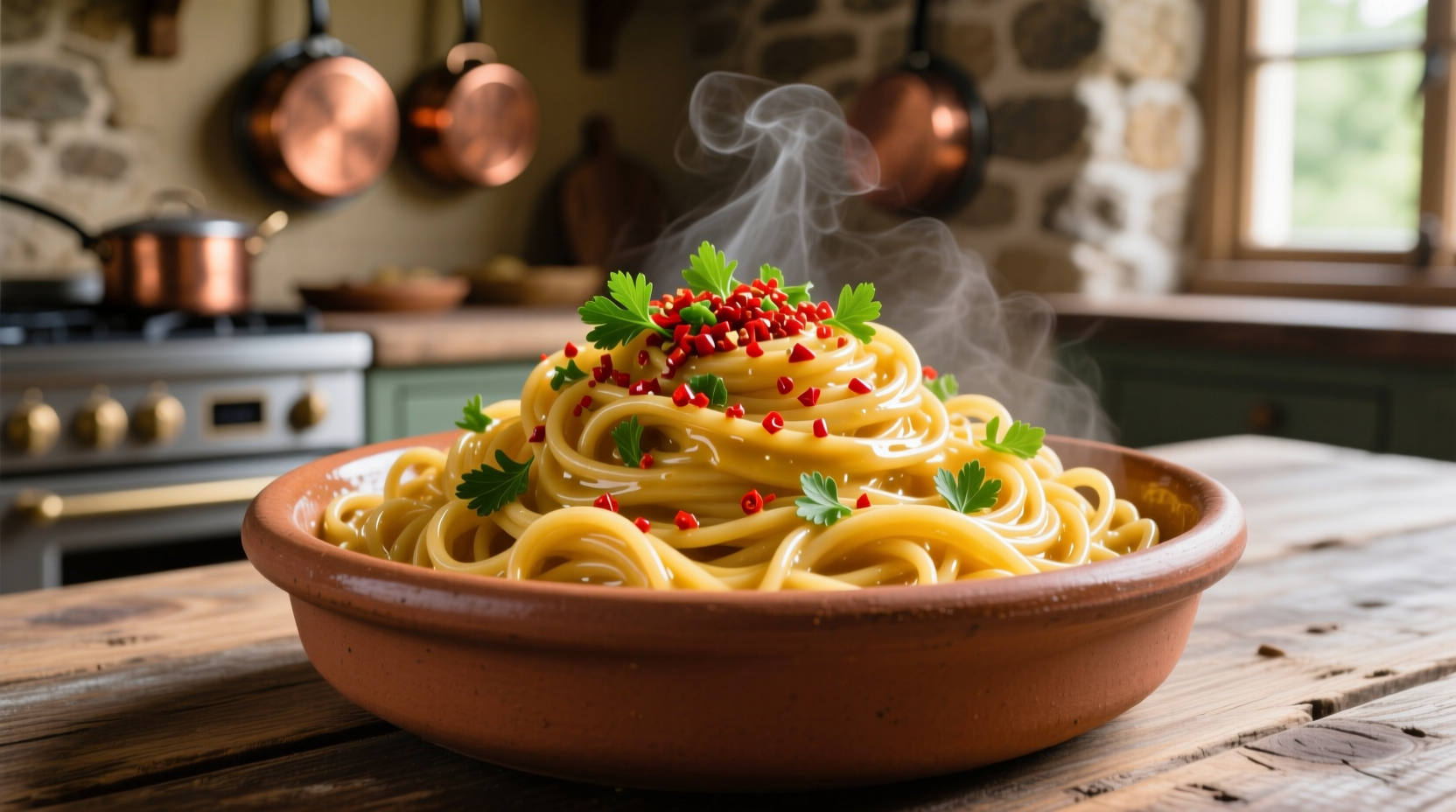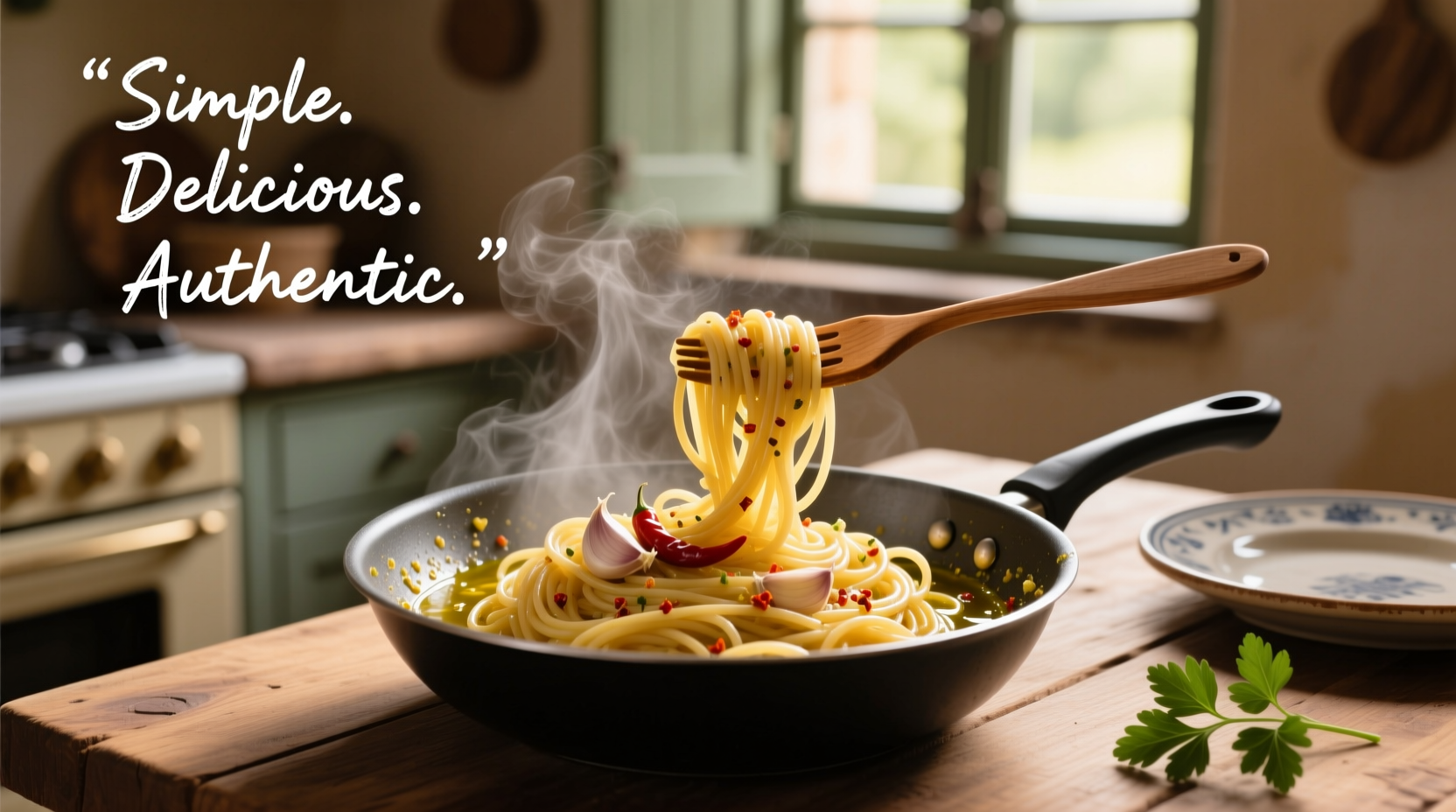Authentic spaghetti with garlic and oil (aglio e olio) requires just 7 pantry staples and takes 20 minutes to prepare. This classic Italian recipe features perfectly al dente spaghetti coated in a silky emulsion of olive oil, garlic, and red pepper flakes—no heavy cream or cheese needed. Follow our chef-tested technique for restaurant-quality results every time.

The Essential History of Aglio e Olio
Spaghetti aglio e olio originated in Naples during the 19th century as "cucina povera" (poor kitchen)—a resourceful dish for fishermen and laborers. Historical records from Pellegrino Artusi's 1891 cookbook Science in the Kitchen and the Art of Eating Well document early versions using just garlic, oil, and pasta. The dish gained international recognition after World War II when American soldiers stationed in Italy brought the recipe home.
| Era | Key Ingredients | Cultural Context |
|---|---|---|
| 1800s Naples | Garlic, olive oil, dried pasta | Working-class staple using shelf-stable ingredients |
| Post-WWII | + Red pepper flakes, parsley | American influence added heat and freshness |
| Modern Interpretation | + Lemon zest, anchovies (optional) | Gourmet variations while preserving simplicity |
Why This Recipe Works: The Science Behind Perfect Aglio e Olio
The magic happens through emulsification—when starchy pasta water binds with olive oil to create a creamy coating without dairy. According to research from the Italian Ministry of Agricultural, Food and Forestry Policies, extra virgin olive oil maintains its polyphenol content best when heated below 180°C (356°F), which aligns perfectly with our gentle garlic infusion technique.
Ingredient Guide: Quality Matters
- Spaghetti: Use bronze-die extruded pasta (like De Cecco or Rummo) for superior sauce adhesion
- Garlic: 4 large cloves, thinly sliced (not minced) for even flavor distribution
- Olive oil: ½ cup high-quality extra virgin (look for PDO certification)
- Red pepper flakes: ½ teaspoon Calabrian variety for balanced heat
- Pasta water: 1 cup reserved before draining
- Parsley: 3 tablespoons fresh flat-leaf, finely chopped
- Salt: Kosher salt for pasta water (1.5 tablespoons per gallon)
Step-by-Step Preparation
- Perfect pasta water: Use a large pot with 6 quarts water per pound of pasta. Salt when water reaches a rolling boil.
- Cook spaghetti: Boil 1 minute less than package instructions for ideal al dente texture.
- Infuse oil: While pasta cooks, heat olive oil in large skillet over medium-low. Add garlic and red pepper flakes, stirring constantly for 90 seconds until garlic turns golden (never brown).
- Emulsify: Using tongs, transfer spaghetti directly from pot to skillet. Add 1 cup pasta water and cook 60 seconds, swirling pan to create creamy emulsion.
- Finish: Remove from heat, stir in parsley, and season with additional salt if needed.
Avoid These 3 Common Mistakes
- Burning the garlic: Garlic scorches above 190°C (375°F)—keep heat at medium-low
- Skipping pasta water: The starch is essential for sauce cohesion (never drain completely)
- Overcooking pasta: Remove spaghetti 1 minute before package time—it finishes cooking in the sauce
Ideal Serving Context
Aglio e olio shines as a weeknight solution when time is limited, but has limitations:
- ✅ Best served immediately (doesn't reheat well)
- ✅ Perfect for light summer meals
- ✅ Ideal when pantry ingredients are limited
- ❌ Not suitable for make-ahead meals
- ❌ Avoid pairing with heavy proteins
3 Chef-Approved Variations
- Seafood version: Add ½ pound shrimp in the last 3 minutes of cooking
- Lemon-herb: Stir in 1 tablespoon zest and 2 teaspoons fresh oregano
- Umami boost: Dissolve 1 teaspoon anchovy paste in the pasta water
Storage and Reheating Tips
While best eaten fresh, leftovers can be stored in an airtight container for up to 24 hours. Reheat gently in a skillet with 1 tablespoon water, stirring constantly. Note that the emulsion won't fully recover—this dish truly shines when served immediately after preparation.











 浙公网安备
33010002000092号
浙公网安备
33010002000092号 浙B2-20120091-4
浙B2-20120091-4